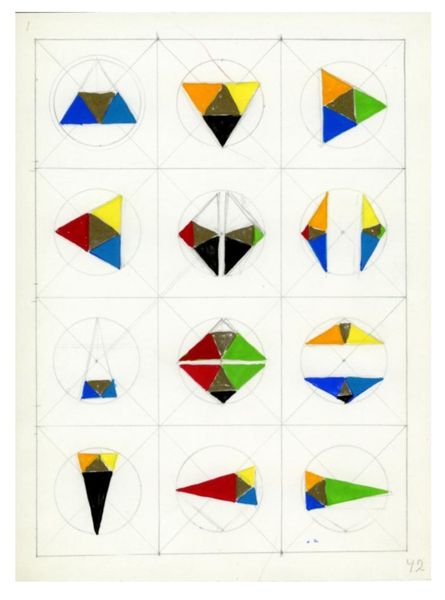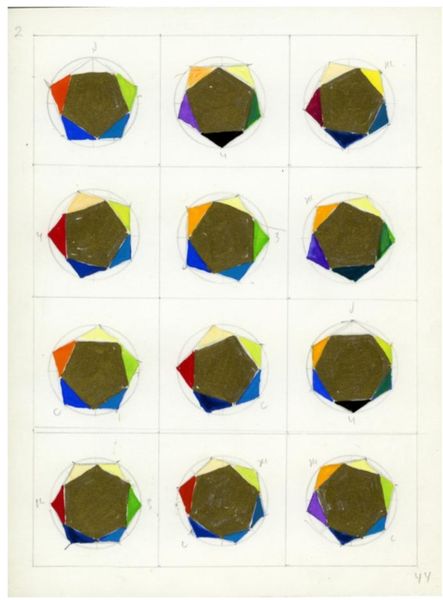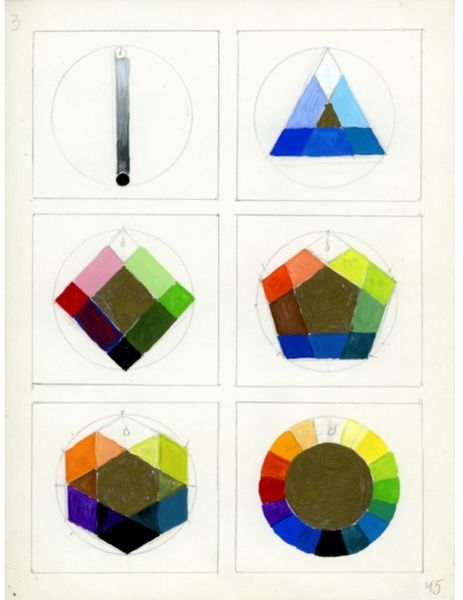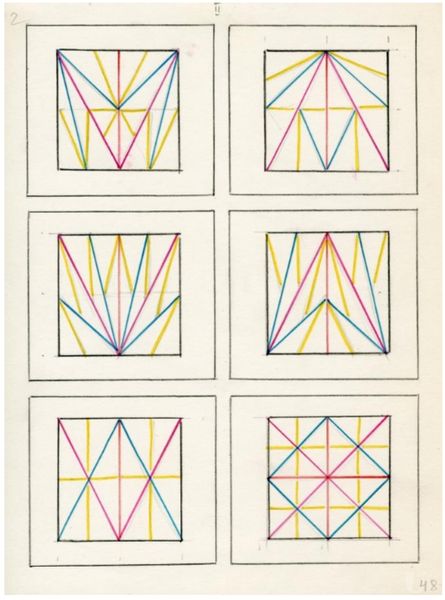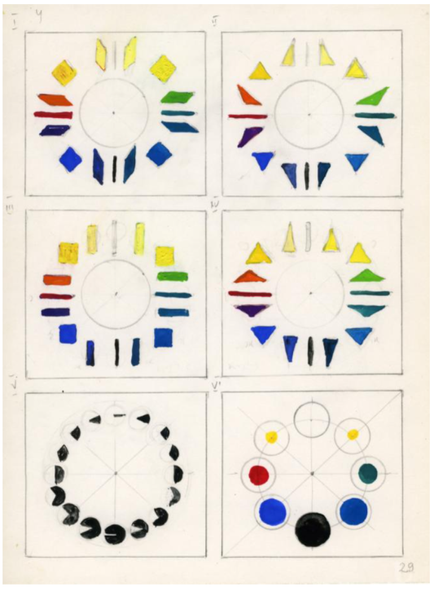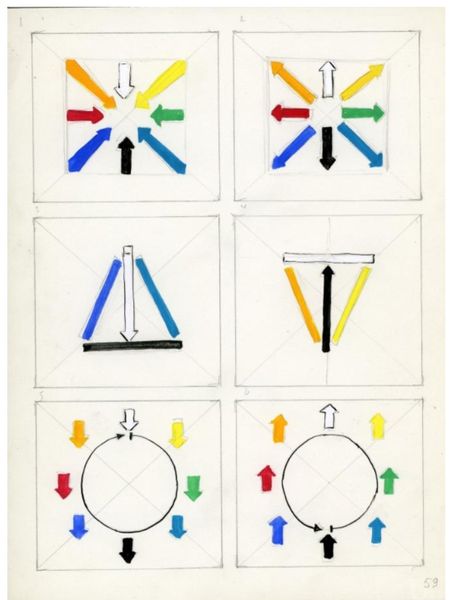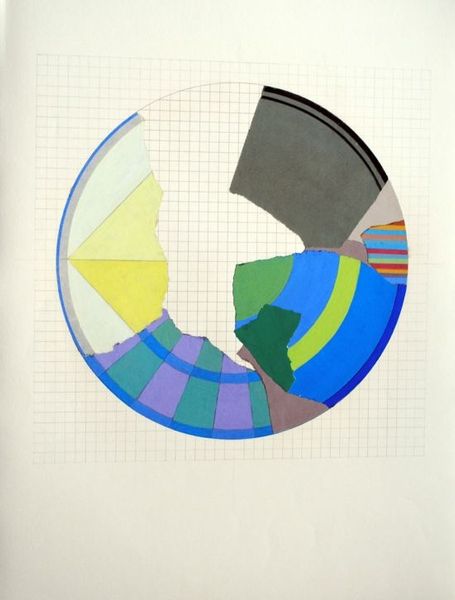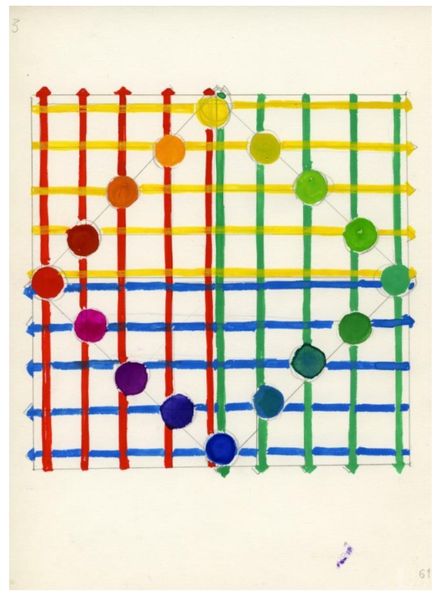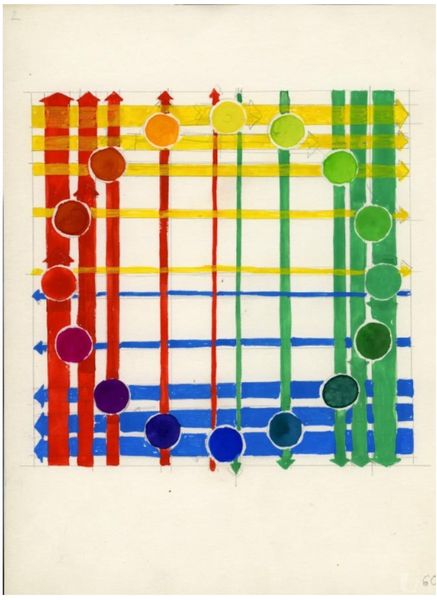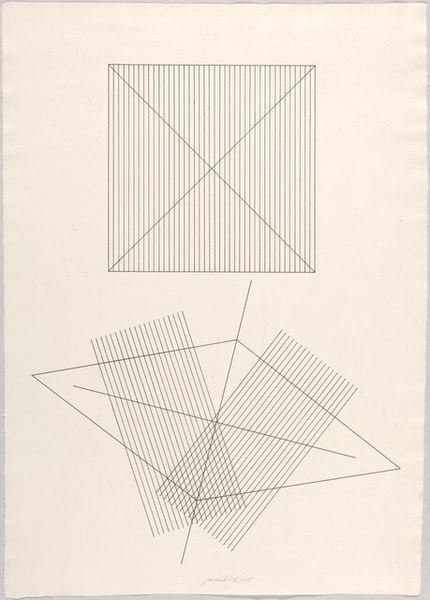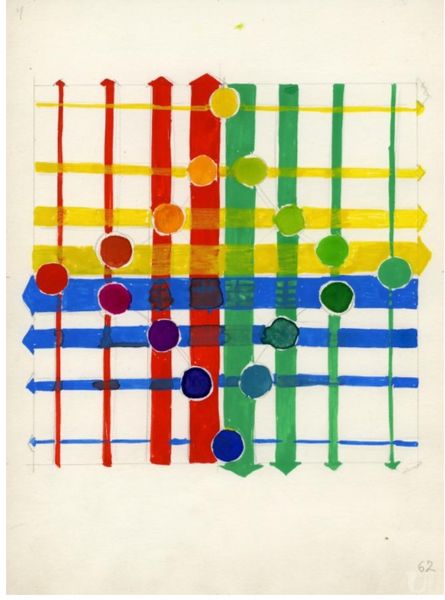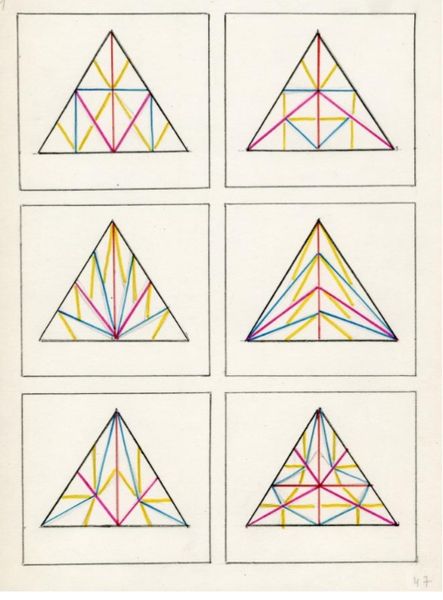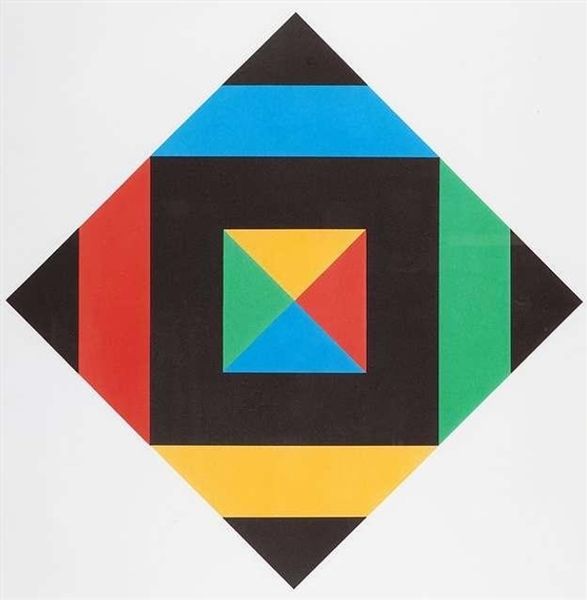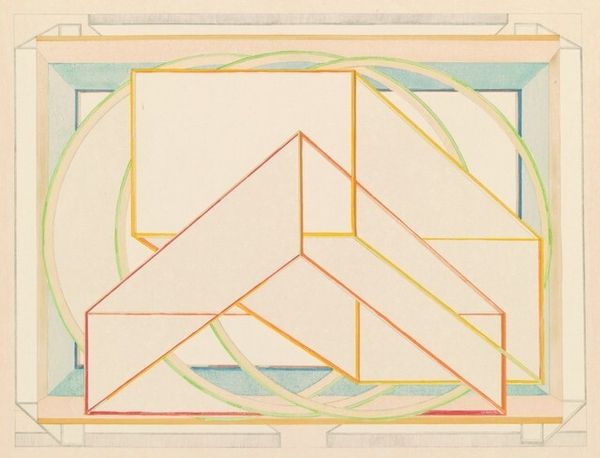
drawing
#
drawing
#
form
#
geometric
#
geometric-abstraction
#
line
#
modernism
Copyright: Valerii Lamakh,Fair Use
Editor: This drawing is titled *The Fourth 'Book of Schemes'. Album #1, the Third Folder*, created in 1978 by Valerii Lamakh. It seems to be a study of geometric forms within circles. What I find most interesting is the interplay of precise shapes and soft color washes. What do you see in this piece? Curator: It is interesting that you immediately noticed this interaction between form and colour. When considering artwork we can focus on formal qualities, such as how geometric figures interact within their given space. Notice, for instance, the relationship of inscribed polygons and curvilinear boundary, the systematic arrangement of colors, and the ways these coloured forms interact, creating both harmony and dissonance within the confines of each cell. What do you observe about the placement and size of the polygonal masses? Editor: I see that each circle contains a different combination of shapes, but the larger shapes in the centre, a brownish sort of square or trapezoid, seem to anchor each individual frame. It’s almost like a family portrait where each member is unique, yet connected. Curator: Precisely. There's a distinct emphasis on structure. In the top row, consider how the relationships between central shapes and perimeter colors play against each other. Do you notice anything interesting about these differences, for instance the balance in massing? Editor: In the first row the central brown colour appears to balance out all the colours; but I think the third one is especially striking, perhaps because of its sharp angles of red and green juxtaposed against the centre form. Curator: I appreciate your reading this combination of coloured shapes and central trapezoid; this emphasis upon geometric abstraction highlights a dedication to fundamental principles of structure which is interesting from a modern perspective, particularly considering developments in painting in the 20th century. What do you think about this relation? Editor: It's intriguing how you've highlighted the structured aspect. I initially focused on the individual shapes, but now I see a cohesive visual exploration of how simple forms can create complex relationships. Thanks! Curator: Indeed! Recognizing structure enhances appreciation, doesn't it? There is an internal logic in pictorial syntax at work here, for sure!
Comments
No comments
Be the first to comment and join the conversation on the ultimate creative platform.
